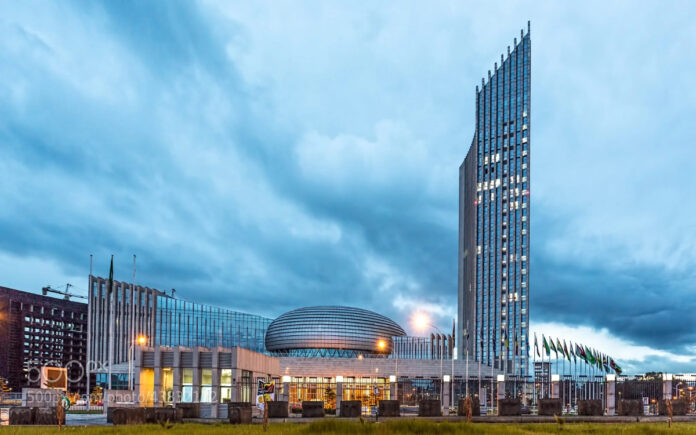Addis Ababa, Ethiopia: The African Union has approved the creation of a new military force to replace over 13,000 troops set to withdraw from Somalia by year-end, amid concerns over escalating al Qaeda presence in the region.
Troops from Kenya, Uganda, Ethiopia, Burundi, and Djibouti, part of the African Union Transition Mission (ATMIS), have been combating al-Shabaab since 2006, as the Islamist group seeks to overthrow Somalia’s government, Bloomberg reported.
The African Union has supported Somalia’s plea to slow down the withdrawal of its troops fighting Islamist insurgents and has called for an international force to replace the AU peacekeeping mission.
Al-Shabaab, linked to al Qaeda, has been conducting a deadly insurgency against Somalia’s fragile central government in Mogadishu for over 17 years.
UN resolutions had mandated the African Union peacekeeping mission to reduce forces to zero by December 31, transferring security responsibilities to the Somali army and police.
The third phase, ending in June, was to see 4,000 troops leave out of a total of 13,500. However, following Somalia’s request, the AU Peace and Security Council (PSC) endorsed a phased approach, with only 2,000 troops departing in June and the remaining 2,000 in September.
Concerns of Neighboring Countries
Uganda and Kenya, contributors to the mission, have expressed concerns over the withdrawal. Uganda’s State Minister of Foreign Affairs, Henry Okello Oryem, warned about the capability of Somali troops to sustain prolonged military engagements against insurgents, fearing a scenario akin to Afghanistan’s chaotic withdrawal. President William Ruto of Kenya echoed these concerns, emphasizing the risk of allowing terrorists to take over Somalia.
In response to these worries, a spokesperson for the European Union emphasized their focus on enhancing Somalia’s domestic security capabilities and supported the idea of a scaled-down international mission proposed by the Somali government. A U.S. State Department spokesperson stressed the necessity of ensuring the new force is sufficiently robust to prevent security vacuums.
Also Read | Israeli Strikes Result in 42 Deaths in Gaza, According to Enclave’s Government Media Office
Recent Challenges
A recent military offensive in central Somalia had reclaimed significant territory from al Shabaab two years ago. However, a counter-attack by al Shabaab in August inflicted heavy casualties on Somali forces and recaptured the town of Cowsweyne. Despite claims by the Somali government that most territorial gains were maintained, military operations have slowed in recent months, with reports indicating no major confrontations with al Shabaab.
The withdrawal of peacekeepers complicates the situation further, as Somalia’s security forces face a shortage of approximately 11,000 trained personnel to effectively combat insurgents. Despite security improvements in Mogadishu, al Shabaab remains a significant threat.
International Support and Funding Challenges
Since Ethiopia’s 2006 intervention, Somalia’s security has heavily relied on international support. The U.S. has invested over $2.5 billion in counterterrorism efforts in Somalia since 2007, with additional undisclosed military and intelligence expenditures. The EU has contributed about $2.8 billion to support ATMIS and its predecessor.
However, funding challenges loom. The EU, which covers most of ATMIS’s $100 million annual budget, plans to shift towards bilateral support and reduce overall contributions, influenced by competing financial priorities. The U.S. and EU aim to diminish peacekeeping operations in Somalia, pushing for self-reliance in security efforts. European nations suggest funding the new mission through assessed contributions from U.N. member states, potentially increasing the financial burden on major stakeholders like the U.S. and China.
While there is strong international backing for a follow-on mission, specifics on funding and mission details need to be finalized.



